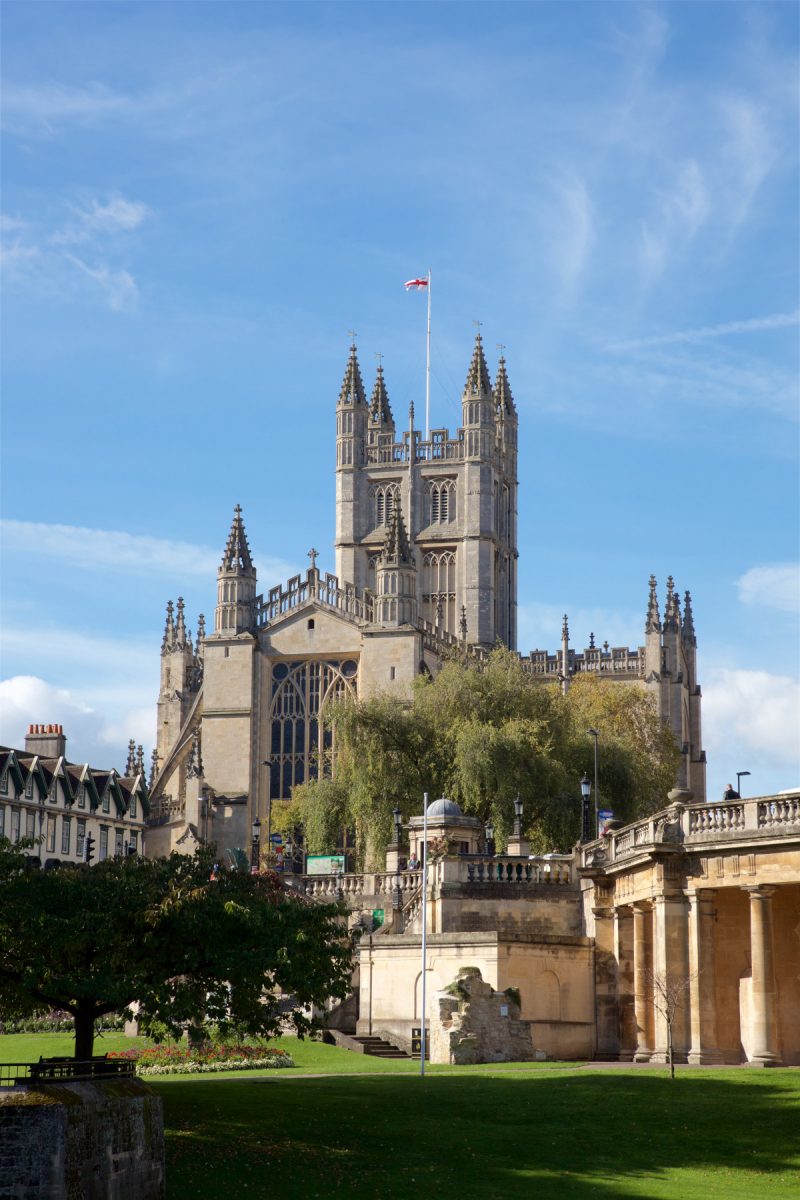Last Updated on February 15, 2024 by Marian Jones
History in Bath tends to focus on the Romans and then the Georgians. But what about everything which came in between? This episode, visiting Bath Abbey and the streets around it, will help explain. How did the coronation of King Edgar, in the Abbey in 973, have a lasting effect on the next thousand years of British history? And, going forward a little, what was Bath like in medieval times? What should you look out for on a visit to this historically significant area of central Bath?
the first bath abbey

Today’s Abbey is the 3rd great church built here. In 781 the Saxons chose this site – where it’s believed a Roman Temple may have stood – to build an abbey. And there, in 973, one of England’s most significant historical moments took place. King Edgar was crowned by Archbishop Dunstan of Canterbury and became the first ‘King of England ‘ in a ceremony which became the blueprint for coronations ever after. Queen Elizabeth II visited the Abbey in 1973 to mark the event’s thousandth anniversary.
Edgar arrived at the Abbey wearing his crown, but laid it aside and knelt at the altar as a Te Deum was sung by all the bishops. He swore an oath to keep the peace for all Christian people and to dispense justice and mercy. Prayers were said, he was anointed with holy oil and the congregation joined in the chorus of Zadok the Priest, singing ‘Let the King Live Forever.’ Edgar was given the ‘sceptre of power and rod of justice’ and was crowned, before taking his seat on the throne. All of these elements have remained part of the coronation ceremony ever since and were the basis for the recent coronation of King Charles III.
a stunning new abbey
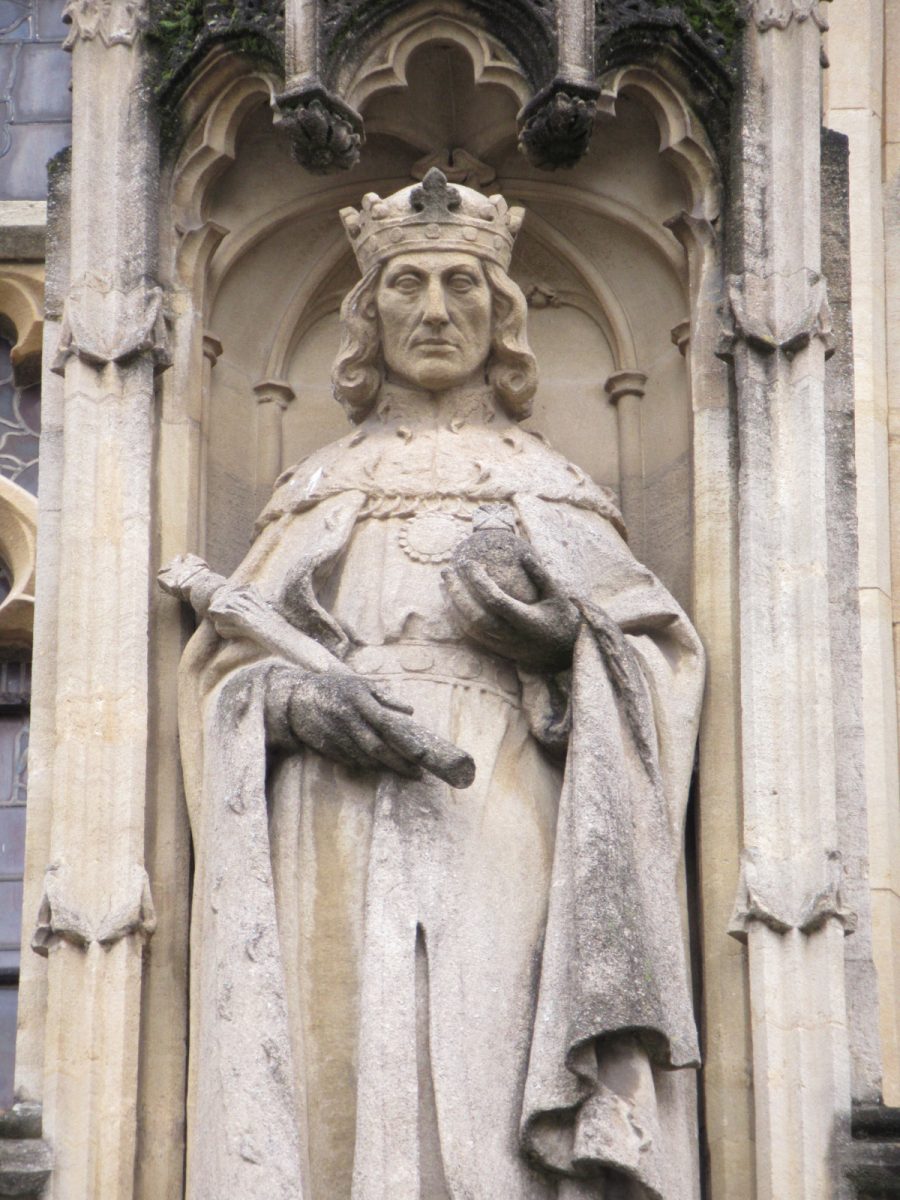
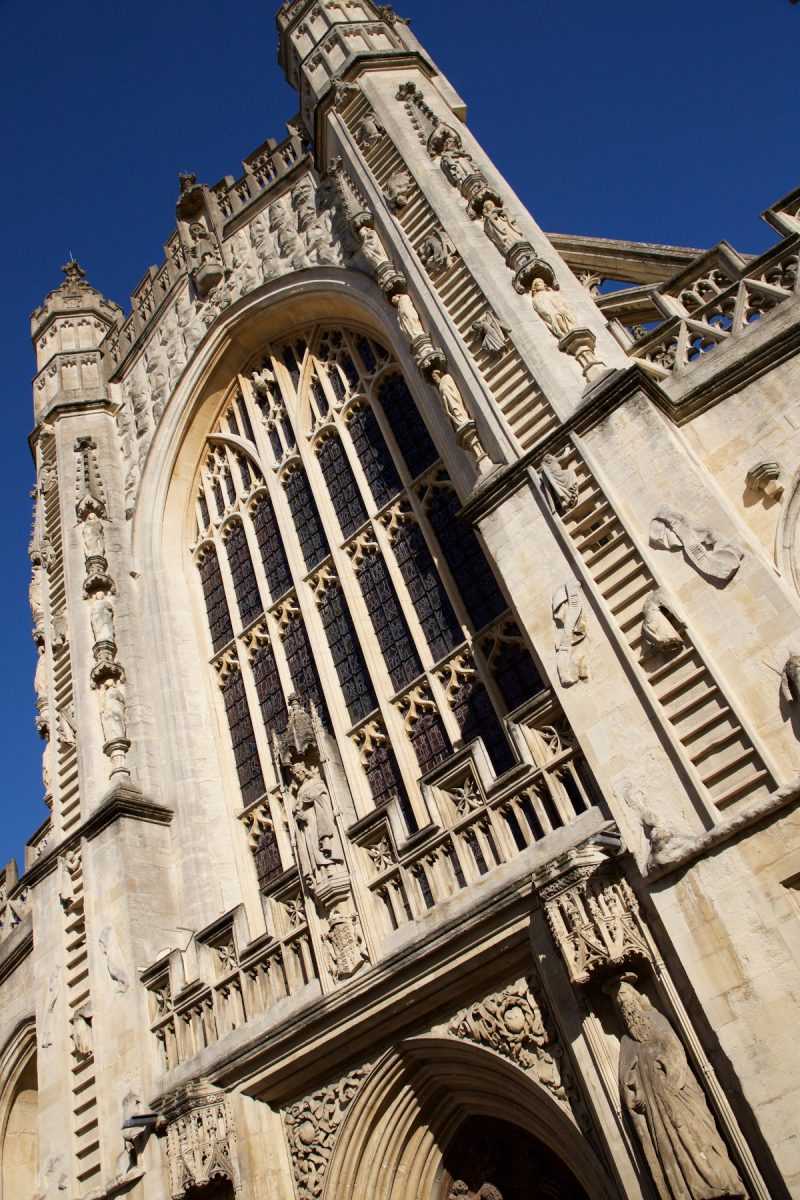
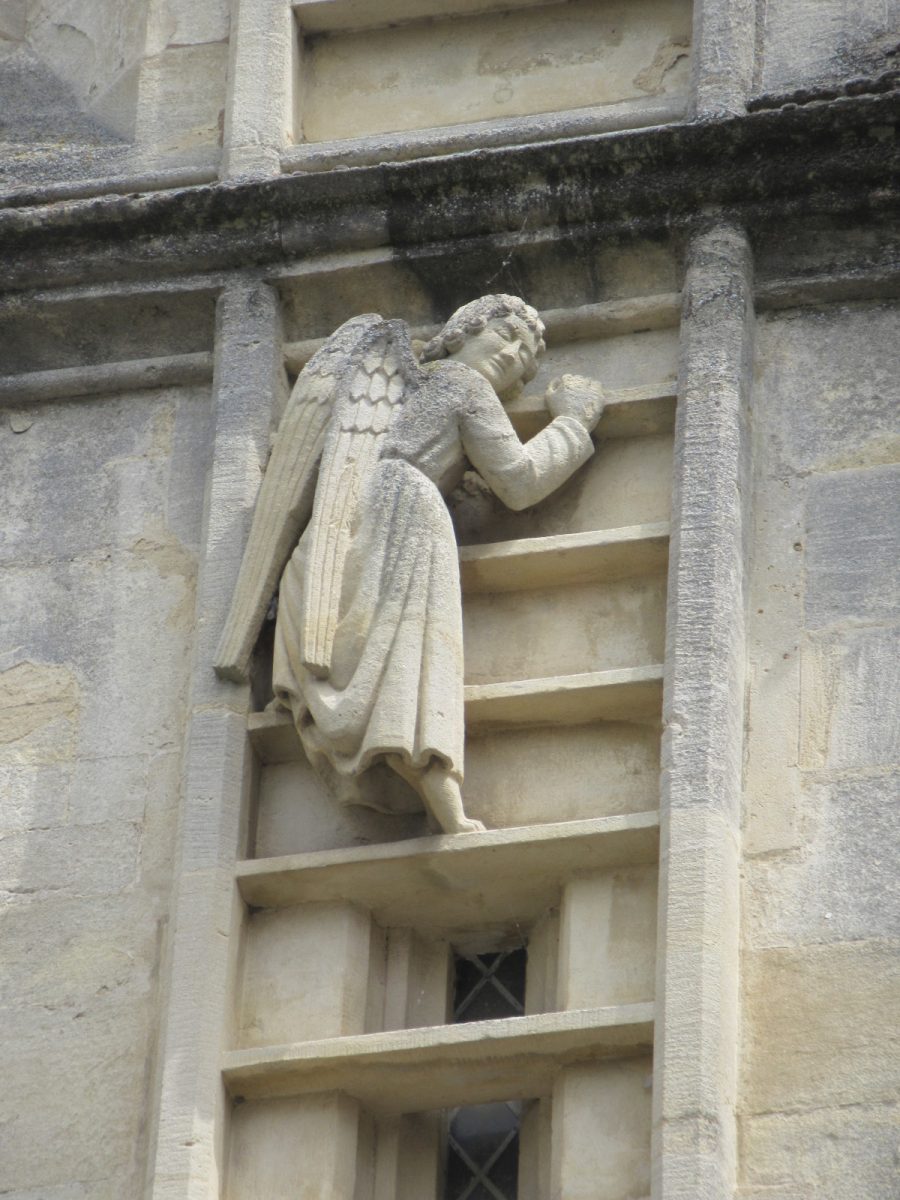
The Normans demolished the Saxon Abbey and built a new cathedral on the site at the beginning of the 12th century. But their impressive new building was damaged by fire only 30 years later and fell into disrepair during the turbulent 14th century, when the Black Death ravaged England. It was not until 1499 that the current abbey was begun.
It all started with a dream. Bishop Oliver King dreamt of angels climbing a ladder to heaven alongside an olive tree (which he saw as representing his own name) and heard a voice commanding him to restore the cathedral. So, he did. King Henry VII sent his Master Mason to oversee the project and still today you can see the original carving of angels, ladders and 2 olive trees on the Abbey’s West Front. Building was halted during Henry VIII’s dissolution of the monasteries, but restarted under Queen Elisabeth 1st who raised money to fund it and visited the site personally in 1574 to show her support.
Of course, there have been many other changes and additions, especially during the Victorian era. In 1927 came the last big new addition, a War Memorial Chapel and the recent Footprint Project saw extensive repair and conservation work, including the installation of under-floor heating using water from Bath’s hot springs. In other words, a new version of the good idea which the Romans had 2000 years ago.
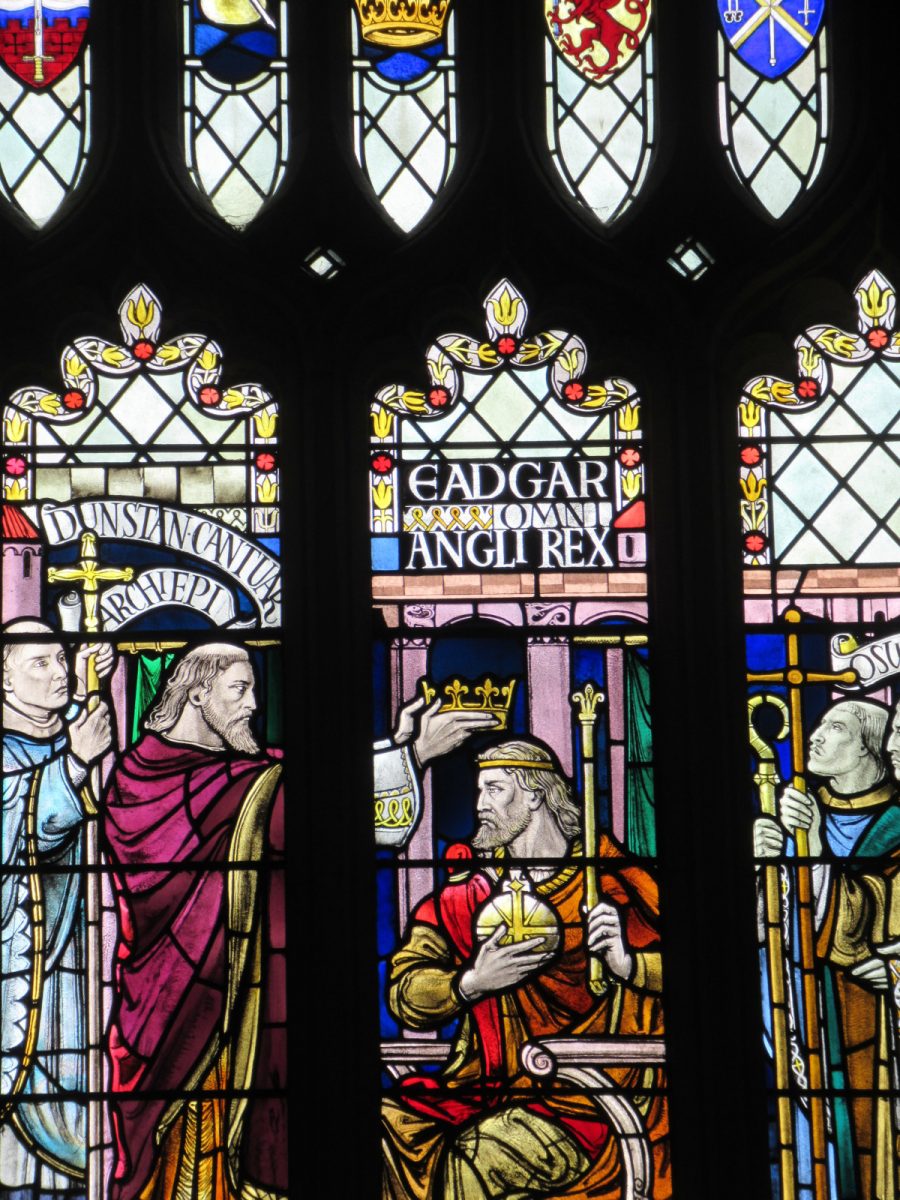
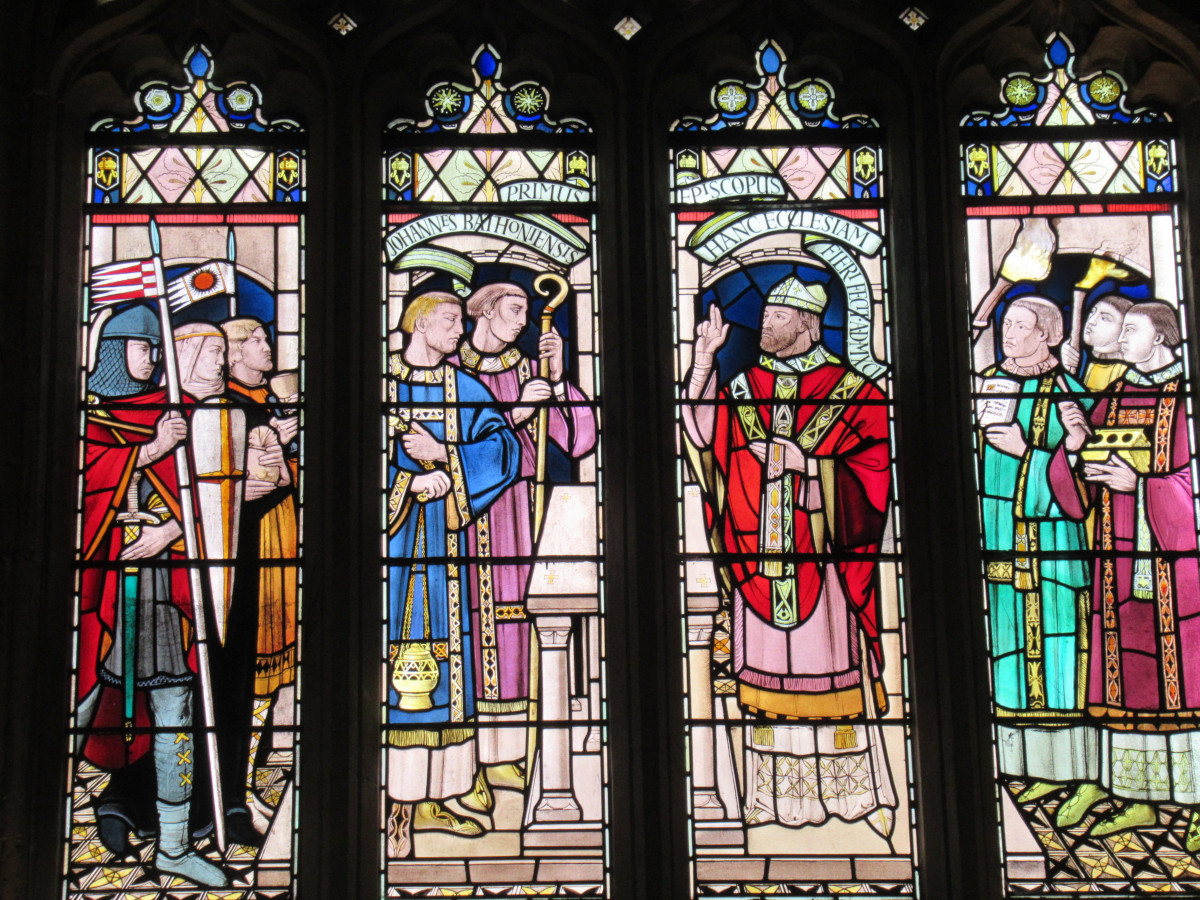
Reminders of the Abbey’s early history include the Edgar Window, showing Edgar’s coronation with the Latin wording – ‘Edgar Omni Angli Rex’ – explaining he was the first king of ‘all the English’ and statues of St Dunstan and of Bishop Oliver King. Behind the altar is the East Window, with its magnificent stained glass pictures of 56 events in the life of Jesus, from the Annunciation to the Ascension into Heaven. They are intended to be ‘read’ from the bottom left to the top right.
Along the walls are 641 memorial tablets, more than in any other English church except Westminster Abbey. Some are for famous people, such as Beau Nash, whose tablet remembers him as ‘Bathonie Eleganiae Arbiter’, or ‘Bath’s Master of Manners’. Others are for fascinating people who are now largely forgotten, such as Admiral Sir Richard Hussey, who served with Nelson and James Grieve, doctor to Empress Elisabeth of Russia. Many are poignant, such as the two remembering Mary Rouse, youngest daughter of Joshua Rouse Esq, who died on January 20th 1825 ‘in the ninth year of her age’ and her mother, Ann Elisabeth Rouse who died two days later, aged 44. There are more stories from the Abbey on the podcast.
medieval bath
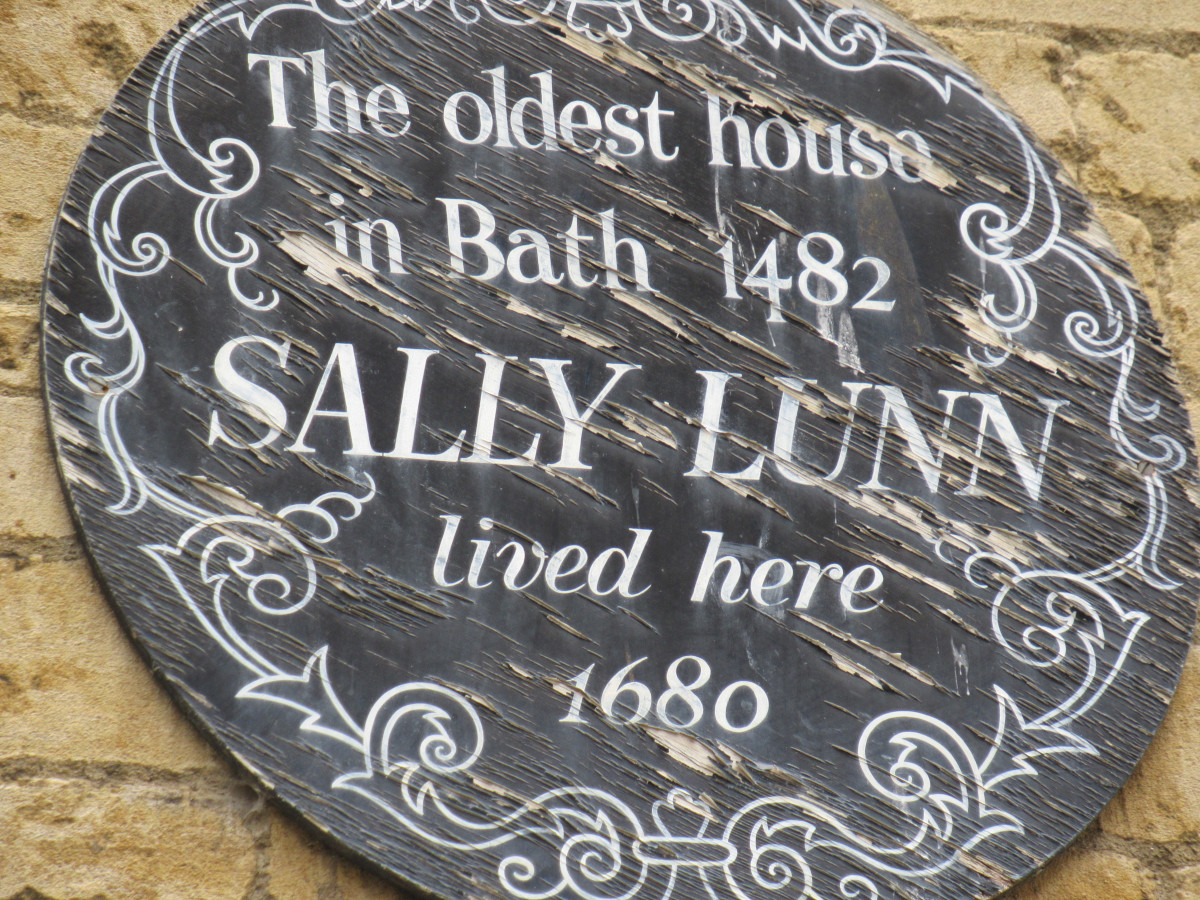
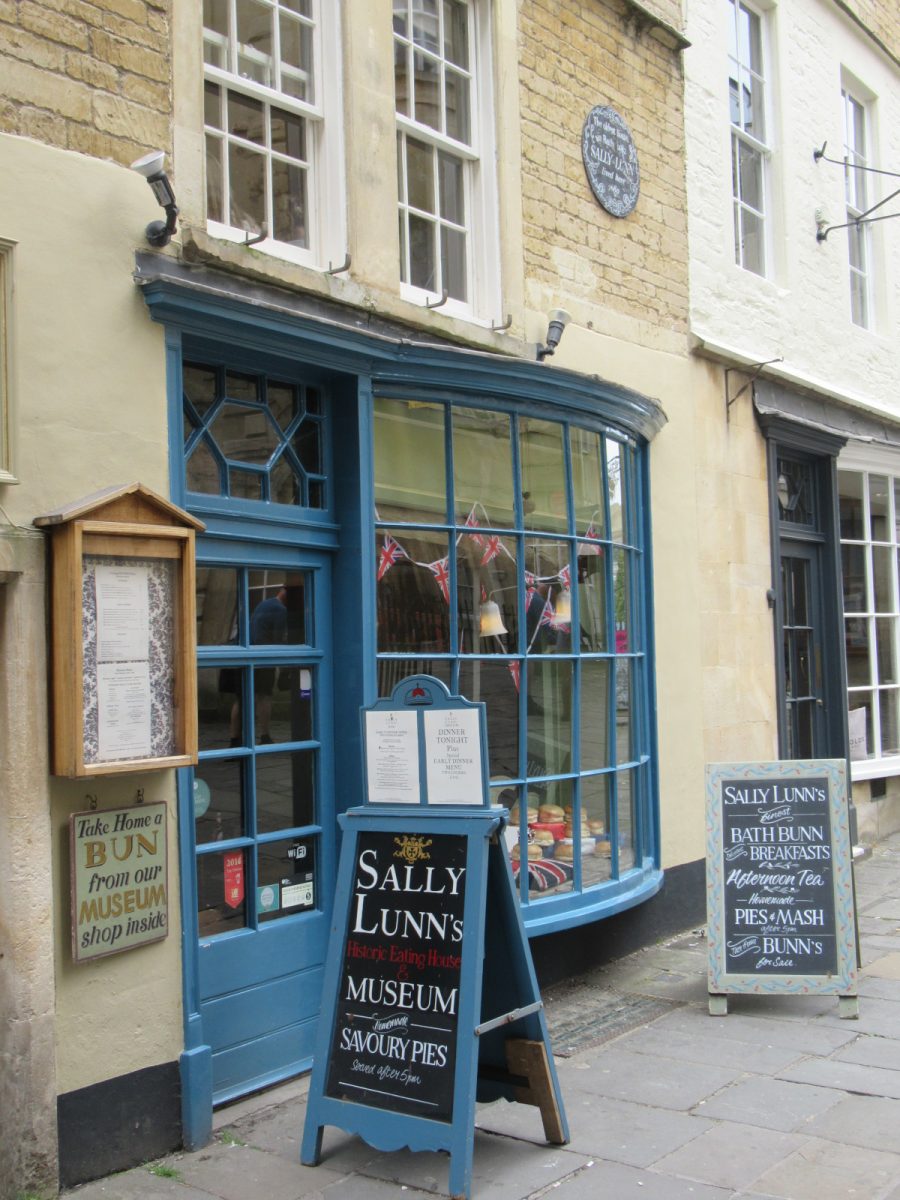

The area around the Abbey was the centre of medieval Bath, surrounded, wrote Thomas Chandler in 1452, by a wall ‘like a coronet’. A quarter of the space was occupied by the Abbey Gardens and the rest by narrow streets. In the 14th century there was an open-air market, centred around a market cross, not far from today’s Guildhall Market in the HIgh Street. In 1371 the Bishop of Bath and Wells wrote that there had been a market in Bath ‘since time immemorial’ and in that year it was held on Wednesdays and Saturdays from October until Palm Sunday. Live animals were traded, along with foodstuffs and locally made woollens and cloths, with the stocks and pillory nearby.
Medieval Bath was a centre for the wool trade. Wool was brought in from the Cotswolds and the monks from the abbey began the city’s weaving tradition. Chaucer’s Wife of Bath was a cloth-maker, who probably worked in the city, but travelled elsewhere to sell her goods. Chaucer tells us she was ‘somewhat deaf’ and this was an occupational hazard for workers in this industry. St Catherine, patron saint of Bath, is the saint of spinning and cloth-making and has a spinning wheel as her symbol. So, medieval Bath was a thriving centre of trade and industry.
the oldest house in bath
On a little house in North Parade, just near the Abbey, is a plaque proclaiming it ‘The Oldest House in Bath’ and it’s believed to date from the 1480s. Today, it is Sally Lunn’s Olde Tea Shoppe, a business begun in the 1680s, probably by a Huguenot baker who’d fled religious persecution in France. Sally, who is thought to have anglicised her original name, was soon famed for her baking and her reputation stuck. Charles Dickens wrote in the 19th century of ‘Sally Lunn, the illustrious author of the teacake’.
Still today one of the most popular things to do in Bath is to drop into Sally Lunn’s for refreshments. The house dates from the 15th century, even if the baking tradition came later, and so it’s a good way to ‘find’ a little touch of medieval Bath. Also, as well as enjoying one of Sally’s teacakes, you can visit the basement museum and see the original kitchen where she first baked her cakes.
Listen to the POdcast
Reading suggestion
A Traveller’s History of Bath by Richard and Sheila Tames
links for this post
Previous Episode The Roman Baths
Next Episode The Healing Power of Bath’s Hot Springs

